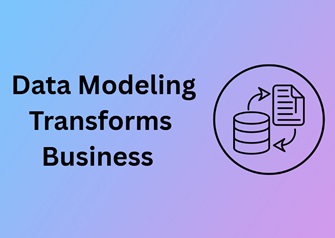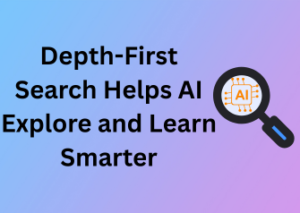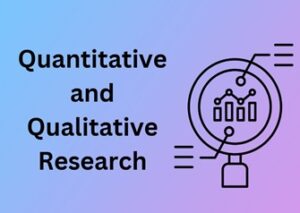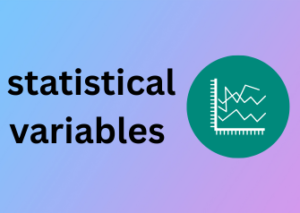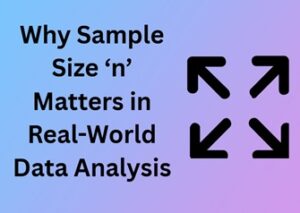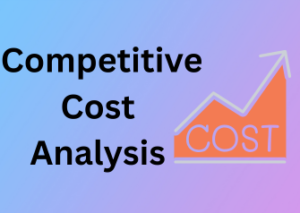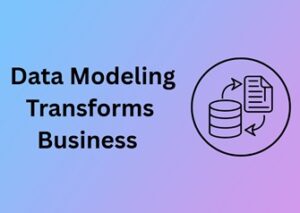When it comes to understanding the pulse of your business, the phrase “traditional analysis” might sound like a comforting old friend. After all, businesses have relied on spreadsheets, static reports, and siloed analysis for years to guide their decisions. But in today’s rapidly evolving digital landscape, sticking with conventional approaches can feel a little like charting your course with a hand-drawn map when GPS exists. That’s where data modeling swoops in to shake things up and in the best way possible.
Let’s dive into what makes rethinking analysis through the lens of data modeling so transformative and exciting. Don’t worry we’ll keep the jargon to a minimum and focus on the logic and benefits you can take to the bank (literally and figuratively!).
What is Data Modeling Anyway?
First off, let’s break it down. At its heart, data modeling is all about creating a visual representation or blueprint of how your data flows, interacts, and supports decision-making. Think of it as crafting a detailed plan before building a house. It defines relationships between data points, organizes everything into systems, and ensures that when your team asks a question whether it’s how to increase sales in Q4 or pinpoint which customer base loves your product you’ve got precise, actionable answers.
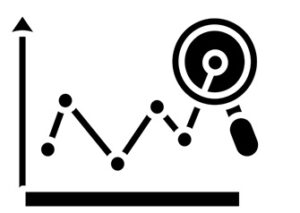
Why Stick to the Old Ways When You Can Innovate?
Traditional analysis often relies on linear or reactive practices. You uncover data points, analyze a historical snapshot, and call it a day. But what traditional analysis misses is context. Data modeling flips the focus from reactive to proactive analysis. By organizing data into patterns and structures, your business is set up to not only understand past trends but predict future outcomes. It’s like stepping into a time machine for foresight instead of hindsight!
The Key Benefits
Rethinking analysis through data modeling has distinct and very impactful advantages. Here’s what makes it a game changer:
- An Emphasis on Relationships: Traditional methods often give us raw numbers without context. Data modeling begins with understanding how those numbers relate and interact, often uncovering relationships that wouldn’t otherwise be noticed.
- Improved Accuracy: By designing a clear “map” of your data ecosystem, you reduce the risk of errors and misinterpretations that can happen when combing through disjointed spreadsheets or generic reports.
- Faster Decision-Making: Forget sifting through manual reports. Data models allow you to query structured systems quickly, providing answers in real-time when you need them most.
- Supports Scalability: Planning to grow your business? Data models are built with scalability in mind. They’ll grow with you instead of becoming outdated as your organization expands.
Building the Backbone of Decision-Making: The Role of Structured Frameworks
If data is the currency of the digital world, structured frameworks are the map guiding how it’s spent. Let’s face it raw data is overwhelming. Without a clear system to organize and interpret, it’s just a flood of numbers, names, and variables. Structured frameworks bring order to this chaos, acting as the backbone of actionable business insights.
Why Structured Frameworks Matter
Imagine trying to build a house without a blueprint. Even with all the bricks and mortar in the world, you’d quickly end up with a mess instead of a functioning home. The same logic applies to making business decisions. Structured frameworks serve as your blueprint, ensuring that the right information is captured, organized, and ready for use when it’s time to drive decisions.
At their core, these frameworks define the rules and relationships that shape how data is analyzed. They tidy up mountains of information into manageable data sets that directly answer your questions be it understanding customer habits, forecasting revenue, or identifying market trends. The clarity they provide means decision-makers no longer have to rely on gut instincts they have a robust foundation of facts and insights.
The Core Components of a Structured Framework
To build a rock-solid decision-making process, it’s essential to understand what structured frameworks are made of. Here are a few key pieces:
- Organization: Clear categorization of data into entities (e.g., customers, products, sales) helps create logical groupings and relationships. Think of it as putting each puzzle piece where it belongs.
- Relationships: Data never exists in isolation. Structured frameworks establish how different data points are connected like tying sales figures directly to marketing campaigns or linking customer feedback to product updates.
- Scalability: A good framework is future-proof. Whether you’re a small company or a growing enterprise, it ensures that as your data expands, it remains navigable and useful.
- Accessibility: Teams need to trust the data they use. Structured systems make it easier to enforce data accuracy, reliability, and governance, giving stakeholders confidence in their decisions.
Real-Life Application: Turning Theory into Action
Let’s say you’re running a retail business and trying to optimize inventory. Without a structured framework, your sales, supplier lead times, and warehouse stock might all exist in separate silos. That’s frustrating, right? A well-designed data framework integrates these pieces, showing you exactly what’s in demand, when stock runs low, and how quickly suppliers can replenish items. Suddenly, you’re not just reacting—you’re planning ahead.
Structured frameworks are also central to predictive analytics. For example, an e-commerce company might use frameworks to analyze historical sales and predict future behavior. This could mean highlighting ideal marketing windows or forecasting seasonal purchasing patterns all of which support smarter business decisions.
The Crucial Bridge Between Raw Data and Usable Insights
Imagine being handed a box of puzzle pieces with no picture on the lid to guide you. That’s what raw data feels like an overwhelming collection of values, figures, and strings that don’t immediately make sense. This is where data modeling becomes a game changer. It serves as the bridge that transforms unstructured, chaotic information into actionable intelligence that can power business decisions. Simply put, data models are like the blueprints for a building—they guide the construction of insight, ensuring all the parts fit together meaningfully and efficiently.
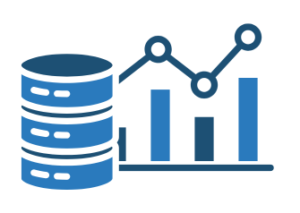
Why Raw Data Alone Isn’t Enough
Raw data, while abundant, is rarely helpful on its own. It might be stored across multiple systems, riddled with inconsistencies, or lack the context needed to inform decisions. Take, for instance, a retail business. They might have customer records, sales data, inventory logs, and website traffic analytics in silos. Without a proper data model, connecting recurring patterns across these datasets is time-consuming and prone to errors.
This is where structured data models come in. They organize raw information into logical formats—think tables, relationships, and hierarchies. These models ensure that when you ask important questions, like “How do sales vary by age group and product category?”, the data systems return relevant, connected, and interpretable results.
The Magic of Transforming Data into Insights
So, how exactly does a data model build that bridge from raw data to insights? Here’s the magic formula:
- Creating Relationships: Data models connect related elements, such as linking customer demographics to purchasing history.
- Defining Business Rules: They establish logic, like identifying high-value customers or filtering irrelevant duplicates, making analytics clean and meaningful.
- Streamlining Access: By structuring and storing data efficiently, models allow faster retrieval and analysis.
Picture it like organizing a messy room into labeled, easy-to-access bins. Suddenly, everything is neat, ideas flow clearly, and patterns that were once hidden become obvious.
Examples of Insights Fueled by Data Modeling
Here are some tangible examples of how companies lean on data modeling for breakthroughs:
- A food delivery app uses a well-structured data model to connect restaurant locations, customer order patterns, and delivery times. Insights gathered from this model help optimize delivery routes, menu recommendations, and dynamic pricing strategies.
- A healthcare organization models patient records, test results, and appointment schedules to improve diagnosis times and streamline resource allocation, ultimately enhancing patient care.
- A marketing agency creates a model linking campaign data with user engagement, enabling them to predict the success of upcoming campaigns and focus on channels with higher returns.
How to Approach Building That Bridge
If you’re looking to harness the power of data models in your business, keep these tips in mind:
- Start with Your Business Questions: Focus first on the insights you need to solve a specific issue or make informed decisions.
- Choose the Right Tools: From simple Excel tables to robust databases like SQL and platforms like Snowflake, use tools that match your needs and scale.
- Iterate and Refine: Building a functional data model isn’t a one-and-done process. Be prepared to tweak and adjust as new patterns or needs emerge.
Choosing the Right Type of Data Model: It’s Not One-Size-Fits-All
When it comes to data modeling, one size definitely does not fit all. Think about it would you use the same blueprint for a skyscraper as you would for a treehouse? Probably not. In the world of data, picking the right type of data model is just as crucial as having accurate data itself. Each business and scenario is unique, so the structure you choose to model your data can make or break the insights you’ll gather.
Here’s the deal: different types of data models are like tools in a toolbox. You need to pick the right one for the job. Let’s dive into the most common types of data models and when each might shine.
1. Conceptual Data Models: High-Level Starting Point
The conceptual data model is like a blueprint. It’s a great starting point for any data project because it helps you define the scope of your data and identify the primary entities you’ll be working with. These models don’t get bogged down with specifics they’re big-picture, making them great for brainstorming and strategy.
When to use it: When you’re collaborating with stakeholders, especially non-technical decision-makers, to build alignment and clarity on what’s important.
2. Logical Data Models: A Step Closer to Structure
Once you’ve nailed down the high-level stuff, you move on to logical data models. These introduce more detail, defining relationships between your data elements and setting rules for how they interact with each other. Logical models are like filling in the skeleton of your blueprint with the structural components.
When to use it: When your aim is to get granular outlining relationships, hierarchies, and dependencies within your data, without diving into physical storage specifics.
3. Physical Data Models: Implementation-Ready
This is where your model actually meets the technical infrastructure. Physical data models detail how data is stored, retrieved, and processed in your system. It’s the nitty-gritty that IT folks love, translating everything into database-specific designs, formats, and query types.
When to use it: When you’re programming databases or setting up your on-premises or cloud storage. Basically, when it’s time to execute.
4. Specialized Models for Unique Needs
If you’ve got unique business problems, it’s worth considering specialized models like dimensional data models (perfect for dashboards and analytics) or hierarchical data models (great for managing structured categories, like organizational charts).
When to use them: When your problem calls for something extraordinary like slicing and dicing data for business intelligence tools or managing structured hierarchies.
How to Avoid the “One-Size-Fits-All” Trap
Here’s a golden rule: don’t let a single framework dictate how you work with data. Ask yourself some key questions before diving in:
- What’s the purpose? Is this for analysis? Deployment? Visualization?
- Who’s the audience? Are you working with technical developers, analysts, or non-technical stakeholders?
- What resources do you have? Ensure the team has the skills and tools to implement your chosen model effectively.
Choosing the right model involves a mix of intuition, experience, and experimentation. Don’t be afraid to tweak and adapt as needed. After all, a bad data model doesn’t just waste time—it can lead to faulty business decisions, and no one wants that!
Breaking Down Silos: How Data Models Foster Interconnectivity
Let’s talk about silos. Not the kinds that hold grain (although those are cool, too), but the ones that exist inside businesses—the kind that keep teams, departments, and even technologies from playing well together. If you’ve ever felt frustrated because one team hogs data or because platforms you rely on don’t seem to talk to each other, you’re not alone. Enter data modeling: the magic wand—or perhaps the Swiss Army knife—that helps dismantle these silos and bring dynamic interconnectivity to life.
What’s the Big Deal With Silos Anyway?
Imagine your marketing team uses one dataset, your sales folks use another, and operations? Well, they’re working off a totally different spreadsheet altogether. Over time, this creates redundancy, inefficiencies, and a lot of unnecessary headaches. Silos hinder collaboration, squander opportunities for innovation, and worst of all, lead to fragmented decision-making. Not exactly the recipe for success, right?
Data modeling is like pulling all of these teams under one virtual roof. By standardizing how data is structured, shared, and interpreted, businesses can smooth out those jagged edges of isolation and foster a culture of transparency and teamwork. Translation: you’ll finally get everyone on the same page—and stay there.
How Data Models Bridge the Gaps
Think of a data model as a blueprint. It’s a visual or logical representation of how different pieces of data fit together within your organization. When thoughtfully designed, these models don’t just describe data; they connect it. Here are some ways they work their magic:
- Centralized Data Access: Instead of several teams maintaining their own, disjointed databases, a well-constructed model enables a unified view of data. This ensures consistency and saves a ton of time spent on second-guessing numbers.
- Improved Communication: By creating relationships between datasets, teams can easily translate complicated metrics into actionable insights that anyone can understand—whether you’re a tech wizard or decidedly less “data-fluent.”
- Shared Understanding: Data models establish common definitions and standards across an organization. No more “Wait, what does monthly revenue actually include?” arguments between departments.
Real-Life Wins: Connectivity in Action
Still not convinced? Let’s look at some examples. Say a retail company builds a data model that integrates their customer relationship management (CRM) system with marketing analytics and supply chain data. Now, marketing knows not only who’s buying what, but when—and operations can predict stock levels with amazing accuracy. Everyone shares insights, adjusts strategies, and celebrates the resulting boost in profitability together.
Or, take a healthcare organization using a data model to align patient records, billing systems, and treatment analytics. With all modules speaking the same language, doctors make more informed decisions, billing gets processed faster, and patients feel supported every step of the way. Interconnectivity in action!
From Whiteboard Drafts to Real-Time Data Tools: An Evolution
Let’s take a step back and picture this: a group of professionals huddled around a whiteboard, brainstorming and sketching flowcharts, arrows, and oversized boxes labeled “DATA.” This is how data modeling begins—a simple idea in its rawest form. But how does this vision leap off the whiteboard and transform into real-time, high-functioning data tools that power business-critical decisions? That, my friend, is the exciting journey we’re about to unravel.
The Humble Beginnings: Concepts Take Shape
Every robust data model begins life as a draft a collection of concepts and relationships that need organizing. Whiteboards (or perhaps digital whiteboards these days, thanks to remote collaboration software) are the playgrounds where possibilities are explored. At this stage, the focus is on capturing the essence of what the data should represent and how the different pieces connect. There’s beauty in simplicity here. Keep it messy, keep it iterative it’s all part of a process designed to build understanding.
At this early stage, know your questions first. What business need does the data model address? Is it answering customer churn predictions? Inventory management? Sales forecasting? This framework ensures you don’t go off-road with tangents or unnecessary complexities.
Technology to the Rescue: Translating Ideas into Systems
Once the whiteboard chaos takes a cohesive shape, software tools step into play—and boy, what a transformation! Tools like ER/Studio, Power BI, Tableau, or even SQL-based systems help convert that scribble into something actionable. Suddenly, relationships between entities, attributes, and processes are codified, visualized, and linked dynamically.
- Pro tip: Invest in tools that allow “collaborative modeling” so your whole team (IT, business analysts, and stakeholders alike) can build the foundation together. This ensures that nothing is “lost in translation.”
Here’s where *data stewardship* becomes critical. Building a model isn’t just about technology—it’s also about ensuring accurate and consistent definitions. Who is responsible for maintaining this data? What happens to it once it’s live and collecting results? Planning for these scenarios transforms your model from a “nice-to-have” idea into a functional core of your data-driven strategy.
Real-Time Data: The Pinnacle of Evolution
The final step in this evolution takes data from static repositories to *dynamic, real-time tools*. Think about dashboards that update the second a sale is made or the latest customer support request is logged. We’re talking systems like real-time analytics platforms and cloud-based storage solutions* that respond instantly to new inputs.
This stage has incredible benefits:
- It enables faster decision-making across teams.
- It improves agility in responding to business changes.
- It allows you to monitor trends in real time, preventing issues before they escalate.
Transitioning to real-time capabilities can feel like an intimidating leap, but start with a hybrid approach. Some parts of your model can update periodically, while high-priority pieces are fed real-time inputs. The key is to prioritize what truly requires immediacy versus what can wait a bit longer.
Avoiding Pitfalls: Common Mistakes in Data Modeling and How to Steer Clear
Data modeling is an indispensable part of modern business strategy, but let’s be real the process isn’t without its challenges. Mistakes in data modeling can lead to poor decisions, wasted time, and costly rework. The good news? By understanding the common pitfalls and how to avoid them, you can navigate the world of data modeling like a pro.
1. Starting Without Clear Objectives: Begin with the End in Mind
One of the most frequent mistakes organizations make is diving into data modeling without a clear understanding of the problem they’re trying to solve. This can lead to models that are overly complex or mismatched to business needs. Think of it like planning a vacation: if you don’t know your destination, how can you choose the best route? Always start with a clearly defined goal for your model. What question are you trying to answer, and how will the insights help your business?
Ask yourself and your team:
- What is the purpose of this model?
- Who will use the insights it generates?
- What outcomes are we hoping to drive?
2. Overcomplicating the Model: Keep It Simple
Here’s a tip: just because you can make a model more complex doesn’t mean you should! Over-engineering your data model often leads to confusion, slow processing, and unnecessary costs. Simplicity is key. Focus on balancing detail and simplicity your model should be robust enough to support decisions but not so intricate that it becomes unwieldy.
A good rule of thumb? Build for the actual use case first, not hypothetical edge cases. You can always refine and expand later.
3. Ignoring Data Quality: Garbage In, Garbage Out
Even the most beautifully crafted data models will fail if the underlying data is flawed. One of the cardinal sins in data modeling is neglecting the quality, consistency, and accuracy of your raw data. Before you even start building your model, invest time in cleaning up your datasets and ensuring they’re ready to be used.
What can you do? Implement processes for:
- Validating data accuracy
- Identifying and removing duplicates
- Standardizing formats across datasets
Remember: the insights your model generates are only as good as the data feeding into it.
4. Ignoring End-User Needs: Build with the User in Mind
Here’s a question to ponder: who is the model actually for? Too often, data teams build models that make sense to the technical experts but confuse the end-user. Whether it’s a visualization tool for executives or a predictive model for analysts, you must design your model with your intended audience in mind.
Pro tips:
- Gather input from stakeholders before starting the design process.
- Provide clear documentation and training for non-technical users.
- Ensure outputs are visually intuitive and easy to interpret.
5. Neglecting Documentation and Communication: Share the “Why” Behind the Model
Another common misstep is failing to document your thought process and communicate it effectively. A model is only helpful if people understand its purpose and methodology.
Proper documentation keeps everyone aligned and reduces the risk of future misunderstandings.
Make it a habit to document:
- The key assumptions made while building the model
- How the underlying datasets were selected
- The intended use cases and limitations of the model
.

